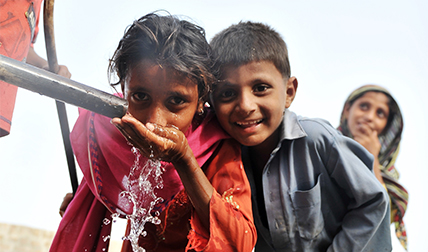Case study: WaterScope
One in ten people lack access to reliably clean drinking water. The implications of this are devastating. Waterborne bacterial pathogens kill more than 2.2 million people annually.
In 2015 University biologist Dr Alexander Patto, engineers Dr Tianheng Zhao and Dr Sammy Mahdi, and physicists Dr Nalin Patel and Dr Richard Bowman pooled their talents to found a company called WaterScope. Its mission was simple: give communities the tools to test their own water. The team pitched WaterScope at our first Postdoc Business Plan Competition in 2015, winning a £7,500 investment from Seed Funds.
The money helped WaterScope develop a novel disposable cartridge that simplifies sample collection, refine their innovative 3D-printable microscope to examine the samples and create image-recognition software to analyse the resulting pictures. The microscope, which was designed by Bowman, is linked to a Raspberry Pi, which tracks the growth of bacteria and presents the results to users on a smartphone, tablet or PC.
Testing the waters
Traditionally water testing has taken 10 to 20 hours; requires expensive, heavy equipment and must be done by highly trained workers, usually off site. WaterScope’s technology is significantly smaller, lighter and cheaper. It can be used on site, doesn’t require an extensively trained technician and provides results in just an hour or two. This means more sites can be monitored, more frequently, ensuring that no one drinks from contaminated sources. The results can also be mapped, potentially allowing almost immediate intervention from NGOs.
In July 2017 WaterScope’s accomplishments were honoured with the University of Cambridge Vice-Chancellor’s Impact Award, which recognises research that has major benefits outside of academia.




